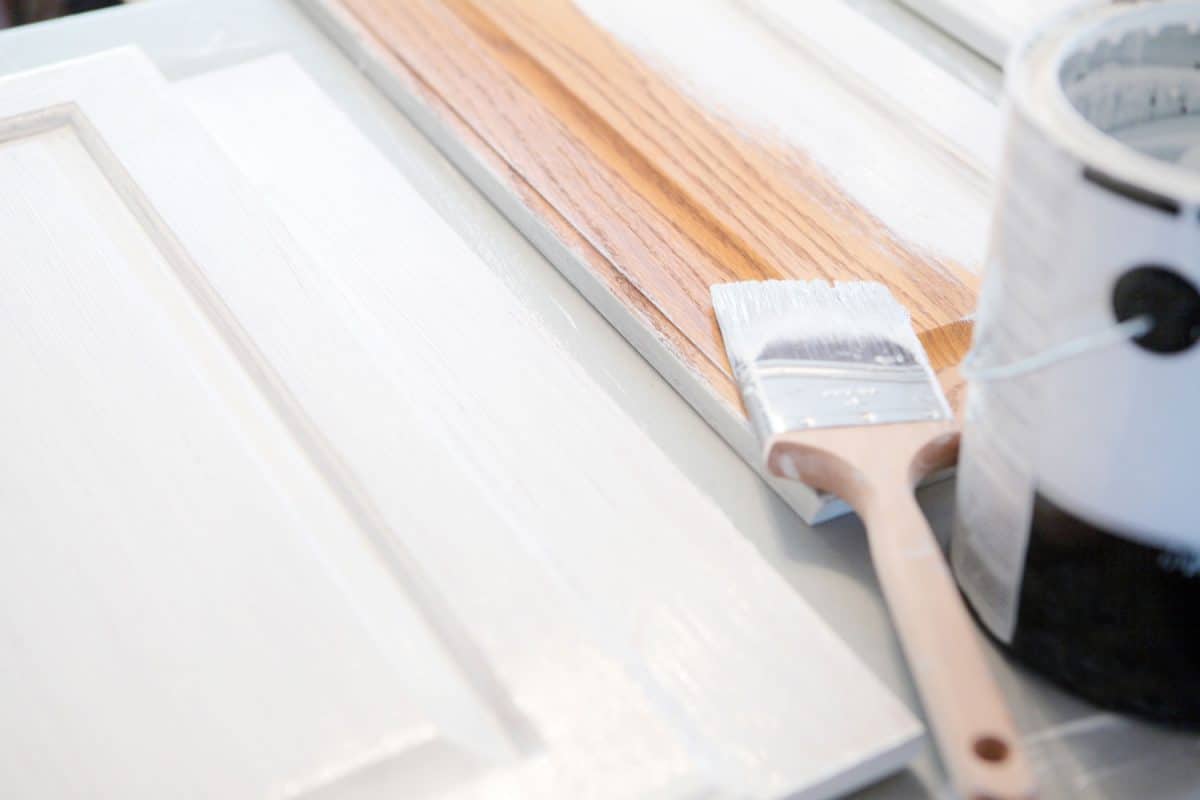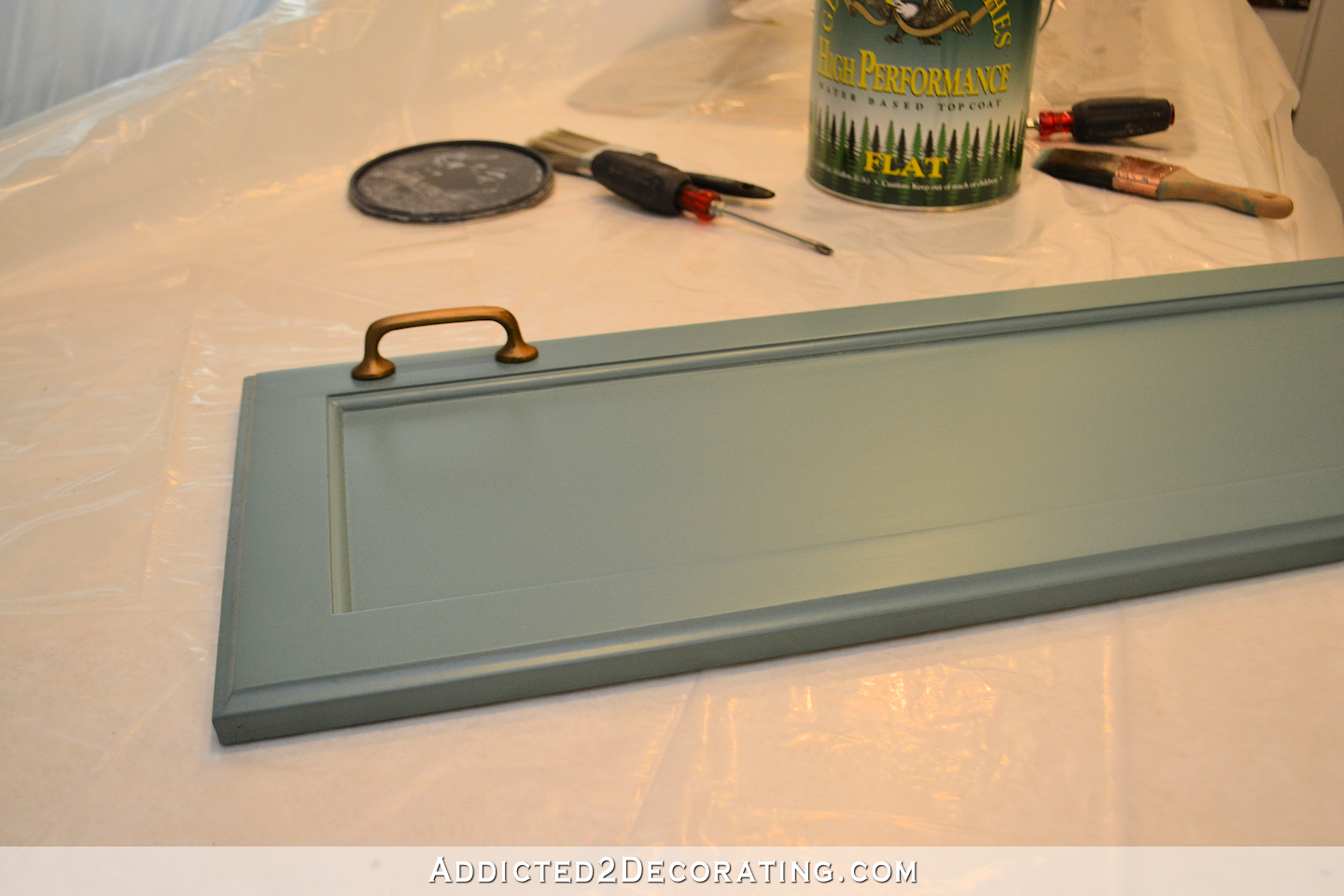Preparing Your Cabinets: How To Polyurethane Painted Cabinets

Before you start applying polyurethane to your cabinets, it’s crucial to ensure they are properly prepared. This involves cleaning and sanding the surfaces to create a smooth and even finish that will allow the polyurethane to adhere properly.
Cleaning Your Cabinets
A clean surface is essential for a successful polyurethane finish. Dirt, grease, and dust can prevent the polyurethane from bonding properly, leading to an uneven and less durable finish.
- Remove any loose paint or debris with a scraper or putty knife. Be careful not to damage the underlying surface.
- Wash the cabinets with a mild detergent and warm water. Use a soft cloth or sponge to avoid scratching the paint.
- Rinse the cabinets thoroughly with clean water and allow them to dry completely.
Sanding Your Cabinets
Sanding helps to smooth out any imperfections in the paint surface and create a better adhesion for the polyurethane. The type of sandpaper you use will depend on the condition of the paint.
- Fine-grit sandpaper (220-400 grit) is ideal for removing minor imperfections and smoothing out the surface.
- Medium-grit sandpaper (100-180 grit) is used for removing more significant imperfections, such as scratches or dents.
- Coarse-grit sandpaper (80 grit or lower) is used for removing old paint or stripping down to the bare wood.
Step-by-Step Guide to Cleaning and Sanding
Here is a step-by-step guide on how to properly clean and sand your cabinets:
- Remove all hardware, such as door knobs, hinges, and drawer pulls.
- Clean the cabinets thoroughly with a mild detergent and warm water.
- Rinse the cabinets with clean water and allow them to dry completely.
- Sand the cabinets with the appropriate grit sandpaper, working in the direction of the wood grain.
- Remove any dust with a tack cloth or a damp cloth.
Cleaning Agents for Different Paint Types
Here is a table outlining the best cleaning agents for different types of paint:
| Paint Type | Cleaning Agent | Oil-based paint | Mineral spirits | Latex paint | Soap and water | Enamel paint | Soap and water | Polyurethane | Mineral spirits |
|---|
Applying Polyurethane

Now that your cabinets are prepped and ready, it’s time to apply the polyurethane finish! Polyurethane is a durable and protective coating that will give your cabinets a beautiful shine and protect them from scratches, stains, and moisture.
Types of Polyurethane Finishes
Polyurethane comes in various finishes, each with its own unique look and characteristics. The most common types include:
- Gloss: This finish provides a high-shine look and is very durable. It’s a good choice for cabinets that get a lot of use, like kitchen cabinets.
- Satin: Satin finishes offer a softer, less reflective shine than gloss. They’re a popular choice for cabinets that need to be durable but not too shiny.
- Matte: Matte finishes are non-reflective and have a flat appearance. They’re a good choice for cabinets that you want to have a more subtle look.
Best Methods for Applying Polyurethane
The best method for applying polyurethane depends on the size and shape of your cabinets and your personal preference.
- Brush: Brushing is a good option for smaller cabinets or for applying polyurethane in tight spaces. Use a natural bristle brush designed for oil-based finishes.
- Roller: Rollers are great for applying polyurethane to large surfaces, like cabinet doors. Use a high-quality foam roller designed for oil-based finishes.
- Spray: Spraying is the fastest and most efficient way to apply polyurethane, but it requires more skill and equipment. You’ll need an airless sprayer or a HVLP sprayer for this method.
Applying Polyurethane Evenly and Without Streaks
To achieve a smooth and even finish, follow these steps:
- Prepare your workspace: Ensure good ventilation and wear a respirator mask.
- Stir the polyurethane thoroughly: This helps to ensure an even consistency.
- Apply thin coats: Thin coats are key to avoiding streaks and drips. If you’re using a brush, apply the polyurethane in long, even strokes. If you’re using a roller, roll in a smooth, even motion.
- Let each coat dry completely: Follow the manufacturer’s instructions for drying times. This usually takes about 4-6 hours for each coat.
- Sand between coats: Sand lightly between coats with 220-grit sandpaper to smooth out any imperfections.
- Apply multiple coats: Two or three coats of polyurethane will give your cabinets a durable and beautiful finish.
Finishing Touches

The final steps in polyurethaning your cabinets involve ensuring the finish dries properly and handling any mishaps. These steps are crucial for achieving a durable and beautiful finish that will last for years to come.
Drying Time and Ventilation
Proper drying time and ventilation are essential for a successful polyurethane finish. Polyurethane requires adequate time to cure completely, which can vary depending on the type of polyurethane used, the temperature, and the humidity levels.
- Always follow the manufacturer’s instructions regarding drying time. This information is typically found on the product label or in the accompanying instructions.
- Ensure adequate ventilation during the drying process. Open windows and doors to allow fresh air to circulate. This will help to prevent the buildup of fumes and ensure proper drying.
- Avoid exposing the cabinets to direct sunlight or heat sources during the drying process. These conditions can cause the polyurethane to cure too quickly and may lead to cracking or bubbling.
Handling Spills and Drips
Spills and drips are common occurrences when applying polyurethane. It’s important to address these promptly to prevent them from ruining your finish.
- Clean up spills and drips immediately using a clean, dry cloth. Avoid using water or other solvents as they can damage the polyurethane.
- For stubborn drips, use a putty knife or scraper to carefully remove them. Be sure to work slowly and carefully to avoid scratching the surrounding surface.
- If you’re using a brush to apply polyurethane, avoid overloading the brush with too much product. This will help to minimize the risk of spills and drips.
Maintaining the Finish, How to polyurethane painted cabinets
Maintaining the finish of your polyurethane-coated cabinets is crucial for preserving their beauty and durability. Here are some tips:
- Clean your cabinets regularly with a damp cloth. Avoid using harsh cleaners or abrasive materials, as they can damage the finish.
- For stubborn stains, use a mild soap solution and a soft cloth. Avoid using any cleaners that contain ammonia or bleach, as these can damage the polyurethane.
- Apply a fresh coat of polyurethane every few years to help protect the finish and keep your cabinets looking their best.
Common Mistakes to Avoid
“Avoid applying polyurethane in direct sunlight or high humidity conditions, as this can lead to bubbles, streaks, and uneven drying.”
How to polyurethane painted cabinets – So you’re ready to give those painted cabinets a super-slick finish? Polyurethane is your bestie for that, trust me. But before you get all DIY-obsessed, maybe treat yourself to a little royal pampering with the kingston king bedroom package.
You deserve it, babe! Once you’re feeling like royalty, you’ll be ready to tackle those cabinets with a whole new level of confidence.
Okay, so you’re all set to give your kitchen cabinets a fresh, durable finish with polyurethane. But before you get too excited, make sure those doors are swinging smoothly. If you’re struggling with a bedroom door that won’t close , you’ll want to tackle that first.
Otherwise, you’ll be dealing with a sticky situation when you’re trying to get those cabinets closed after the polyurethane dries! Once those doors are working perfectly, you’re good to go with the polyurethane.
